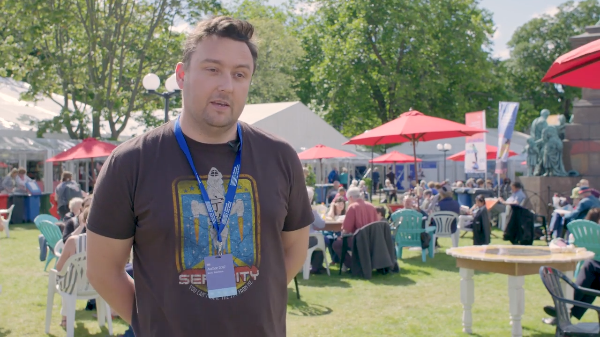This resource is great for:
Creating comic characters!
Summary:
Watch a filmed interview with author Barry Hutchison about what’s next for his Beaky Malone character (and his brand new series). Then explore the genre of comedy by creating your own funny character.
Download this resource:
Creating Comic Characters with Barry Hutchison – PDF
Creating Comic Characters with Barry Hutchison – Word doc
Introduction:
“If you’re writing scary books then go on a rollercoaster, do a bungee jump, do something scary and know what fear feels like. So, to write funny you have to have experienced funny stuff.”
Barry Hutchison is the author of the hilarious Beaky Malone series, as well as over 80 other books for children and teenagers, plus comics like The Beano.
During the 2017 Edinburgh International Book Festival, we asked our young reporter Angelina to catch up with Barry to find out about what’s next for Beaky Malone, and how he creates such hilarious characters.
Watch the short and snappy interview below with your class, then read on to use Barry’s tips to write a character study for your own comedic character.
Activities
Part One – Building a Funny Character
Before Barry starts writing, he takes a sheet of paper and jots down everything he knows about his characters. This ensures that he has thought about every aspect of his characters and what ‘makes them tick’ before he creates stories around them.
We’re going to use Barry’s technique to create our own funny characters. So, take a sheet of paper, have a think about who you want your character to be, then answer the questions below to develop your idea into a fully-formed character.
- The basics! Name, age, where do they live?
- What do they like?
- What do they not like?
- What is their favourite music?
- What is their favourite food?
- What is the worst thing that’s ever happened to them?
- What is the most embarrassing thing that’s ever happened to them?
Barry says that even if all of these ideas don’t make it into his final story, it still helps to build a fully-formed character with a background, and an idea of how they will react to different situations.
Top tip: In the interview, Barry tells us that a lot of Beaky is based on him when he was younger. Remember that you can take ideas from things that have happened to you, or your friends and family. As Barry said you have to have experienced funny to write funny.
Part Two – Presenting Your Character
Next, present your character to the rest of your class. Do they seem like a fully-formed character? Can you make your class laugh? Let your classmates ask additional questions to get you thinking on your feet about your character – their backstory, how they might react to different things etc.
Now you can use your character in a story! Think about different funny situations you could put them in, or expand on one of the scenarios you imagined above.
Further information:
Young reporter Angelina is taking part in What’s Your Story?, Scottish Book Trust’s development programme for teenage writers and illustrators. Find out more about the programme at www.thestoryis.co.uk
